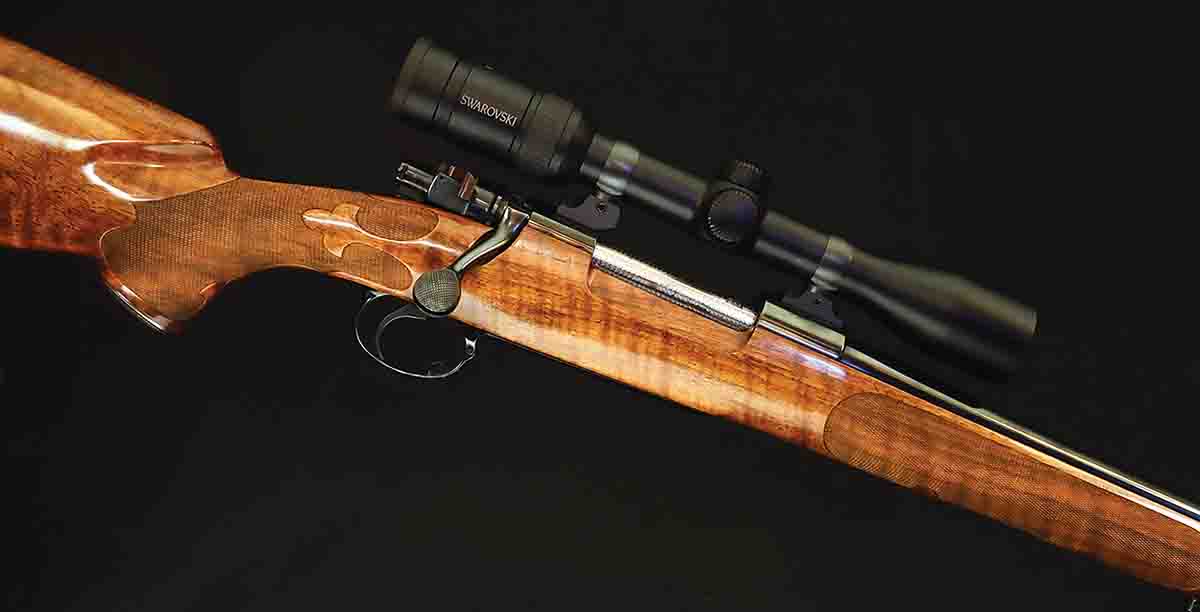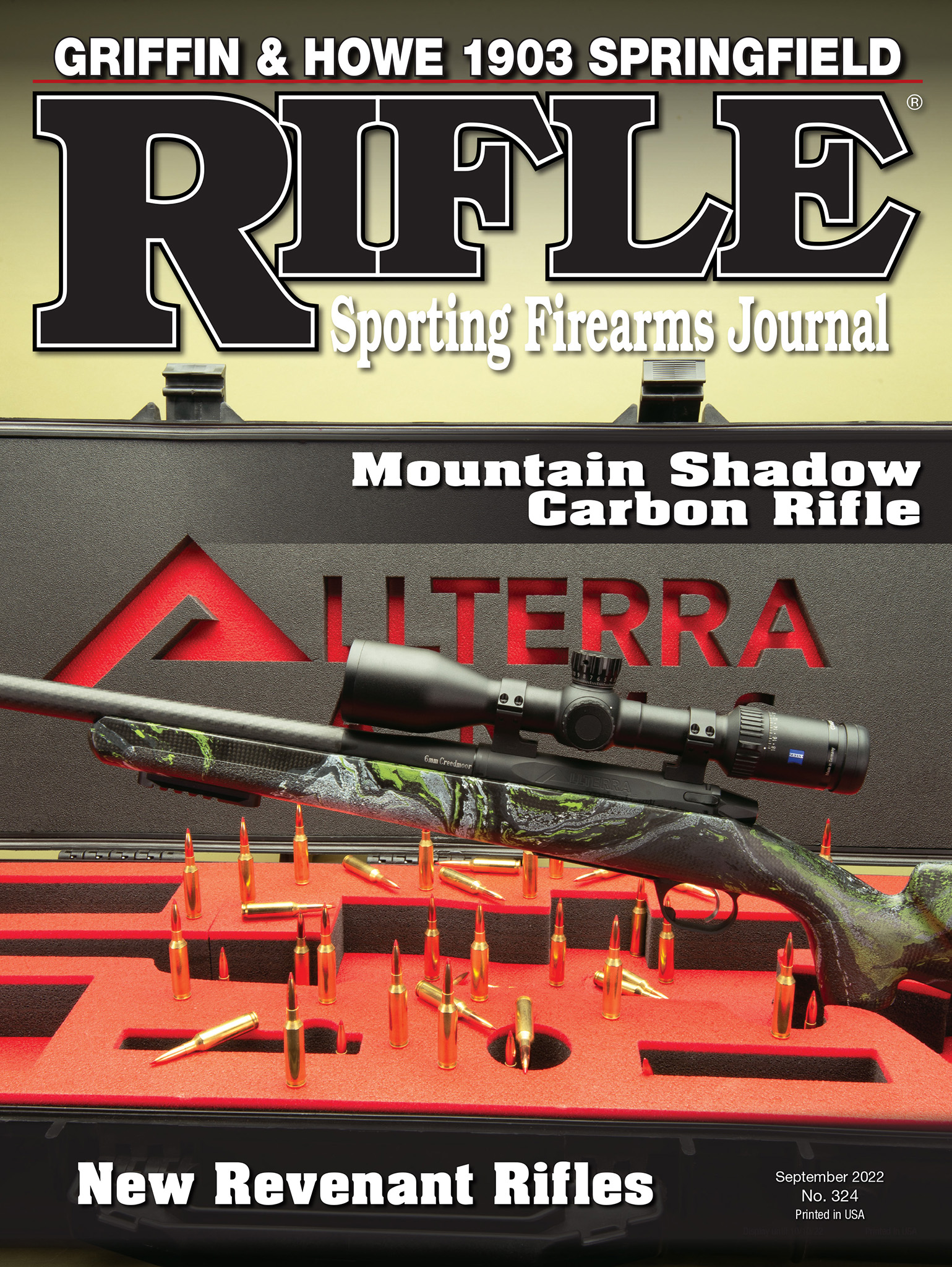Walnut Hill
Beauty Vanishes, Beauty Passes
column By: Terry Wieland | September, 22

At the height of the fervor, around 2005, such artisans were being compared to Michelangelo in terms of sculpture and da Vinci in terms of line. I seem to remember reading of one checkering specialist who was “Picasso with a checkering tool.”
Actually, I may have dreamt that last, but it would not have surprised me to read it, so hyperbolic did the praise become. As for the products themselves, to ask how they shot, or to suggest hunting with them, or even taking them to the range, was heresy demanding the stake. “You’d never shoot that…! Philistine!”
Confession time. I have been an admirer of custom bolt rifles since the age of 15, when I first became hooked on Jack O’Connor’s writing. For years thereafter, even in my darkest periods of freelance poverty, I daydreamed about hunting mountain sheep with an Al Biesen rifle. As the rage for better and better (and ever more expensive) custom rifles accelerated through the 1990s, I was right there, dreaming bigger and bigger.
Aside from a bunch of global big-game hunters with lots of money to spend, the prime mover behind this trend was the American Custom Gunmakers Guild (ACGG). It was founded in 1982 – it celebrates its 50th anniversary this year — and was intended to put the fine crafts involved in gunmaking on a formal footing, similar to the old craft guilds of Europe. Applicants for membership would have their work evaluated by recognized masters; if one made the ACGG, they could advertise themself as such, and this would be a guarantee of sorts for a guy about to hand over several grand as a down payment on a rifle.
As often happens, things didn’t turn out exactly the way everyone envisioned. The membership always seemed to include more hopeful (albeit skilled) amateurs than working professionals. The best professionals knew how to make guns, but they also knew how to run a business, and that’s important.
This is an impression, but it seemed to me that by about 2010, too many ACGG members were taking themselves entirely too seriously as artistes rather than craftsmen producing a usable product.
To harken back to the 1960s, Jack O’Connor often wrote about Al Biesen, the Spokane riflemaker. He mentioned others too, but Biesen was his proclaimed “favorite gunmaker.” Outdoor Life had a circulation in the millions, and they hung on O’Connor’s every word, and Biesen always had more business than he really needed. He stayed busy right up until his death a few years ago.
For a long time, when anyone introduced the name of an obscure gunmaker, the question was “Is he as good as Al Biesen?”
Al Biesen was certainly good – a first-rate craftsman equally skilled in both steel and wood, who could machine an action, carve a stock out of raw walnut, or impart beautiful, recessed checkering in a fleur-de-lis pattern. He always maintained, however, that he was a maker of hunting rifles, not works of art. That being the case, there were always tradeoffs in terms of hours spent at the bench on arcane nuances, versus keeping the cost within estimate and delivering on time.
One time, at the ACGG, I heard some members talking about Biesen. They agreed that, respected as he was, he was not really in the top tier and, given the guild’s stringent standards, he might not even qualify for membership these days. Tom Turpin, who has done the “custom guns” section for Gun Digest for many years, insists Biesen was as good as any of the specialized guild members, but never forgot that he was making hunting rifles, for hunters to take hunting. He always prized flawless usability over extravagant display.
Looking back now, I can see how the zenith of the custom-rifle mania came about, not because of a widespread outburst of good taste, but because of a unique alignment of the planets – a correlation of factors unlikely ever to recur. Aside from O’Connor’s influence, there was an explosion of hunting in Africa, there was Safari Club International with its annual convention, there was a plethora of specialized magazines touting this guy or that. The core driving force, though, was money and demand.
Guys went nuts over walnut, and as restrictions eased in Asia, importers brought in blanks of French walnut (Circassian, Turkish, whatever name) so glorious they would knock your socks off. But then, so would the prices. Blanks for a matched pair of English doubles might run $10,000, and it was tough luck if the stockmaker cut into an irreparable flaw.
Suddenly, though, it was all over. A custom bolt-action by a fine maker that might have cost $12,000 to make 15 years ago – not at all unusual – could sell now, used, for as little as $2,500, depending on circumstances.
What happened? First and foremost, the guys with the interest and the money – as well as egos and competitive instincts – began dying off and demand started drying up. After September 11, new-found admiration for the military led to a passion for semiautos like the AR, and super-long-range sniper rifles. The plastic stock industry, in its infancy in the 1990s, gained ground rapidly. With accuracy tied to stock stability, walnut faded from favor.
Then there was CNC. Mass-produced rifles became better than they had ever been, at prices that were relatively low. Gone were the days when, if you wanted a beautiful, accurate, ergonomic rifle, you had to have one made. Now, you could buy one off the shelf from Browning, Blaser, Sauer, Mauser, Steyr, or any number of places. The more common Rugers and Savages became better than ever, with Savage especially concentrating on excellent accuracy and low prices.
More and more, it seems as if the world that spawned the ACGG is sliding away in the rearview mirror, just like the era of great Schützen rifles ended by 1920, after a mere 40 years, and before that, English duelling pistols (1770-1850). Like those, the era of the ultra-fine custom bolt rifle petered out largely because of social conditions. In the case of Schützen, it was a combination of anti-German sentiment because of the war, combined with Prohibition closing down the beer parks that were integral to it; duelling pistols died out because the English public swung to general disapproval of dueling.
Six years ago, I had the opportunity to buy an Al Biesen rifle, a .270 on a Mauser action, for what I thought was the ridiculously low price of $2,600. The vendor, I assumed, had no idea what he had – the classic opportunity to pick up a diamond at zircon prices. Now I’m not so sure. Ever since, comparable rifles, albeit by less familiar names, have sold at similar prices, both from dealers’ racks and at auction.
I knew for sure the Earth had rotated when I mentioned Biesen’s name to another rifle lover, a young guy. Who? he asked. Jack O’Connor’s favorite riflemaker, I answered. There was a short silence. Jack who?
The good news out of all this? (There is always some good news.) The good news is that all those rifles, by Biesen, Bolliger, Fisher, Wiebe, Goens, Miller – names we used to conjure with – are every bit as good now as they were then. Except, they can be picked up a lot cheaper.
Diamonds at zircon prices. Just keep telling yourself that.


